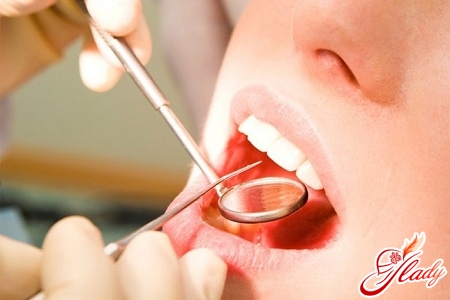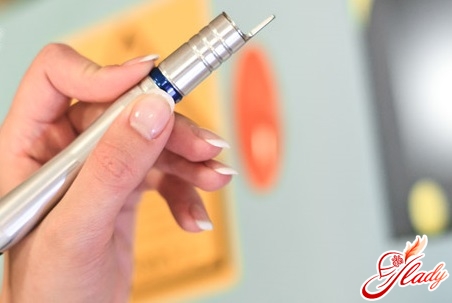 It is generally accepted that wisdom teeth are cutadults. By and large, this is true. However, these teeth begin to form in childhood. But the peculiarity of the development of third molars (as dentists call them) is that they do not have predecessors - baby teeth, which would prepare the ground for eruption in advance. If these teeth were cut like all the others, there would certainly be no problems. Although babies also suffer when their teeth are cut. The child suffers because he cannot understand why it hurts so much. And how many sleepless nights a mother has to spend at the child's crib! He cries because it hurts, he has a fever, he feels bad ... However, we are not so much talking about children as about adults. It also happens that a wisdom tooth grows like a normal tooth, without bothering its "owner", and at a certain point, eruption through the gum can stop. Then the tooth, figuratively speaking, comes out of hibernation again, that is, the wisdom tooth is cut and hurts. It hurts a person to eat, sometimes it hurts to open his mouth. Very often, when a tooth is being cut, symptoms such as swelling and temperature appear. Why does this happen? There are several points of view on this problem. According to some scientists, the difficult growth and incorrect position of wisdom teeth are due to the fact that modern people, unlike their ancestors, have slightly reduced jaw size. In other words, the number of teeth has remained the same, but the dental arches of the upper and lower jaws have become smaller. And since wisdom teeth are the last to cut, they can easily fall into place only when there is free space there. If the picture is different, they begin to change: they can cut at an angle, press on neighboring teeth, thereby destroying them, remain under the gum or even under the jaw bone. How many times have dentists had to trim the gum to free the ill-fated tooth.
It is generally accepted that wisdom teeth are cutadults. By and large, this is true. However, these teeth begin to form in childhood. But the peculiarity of the development of third molars (as dentists call them) is that they do not have predecessors - baby teeth, which would prepare the ground for eruption in advance. If these teeth were cut like all the others, there would certainly be no problems. Although babies also suffer when their teeth are cut. The child suffers because he cannot understand why it hurts so much. And how many sleepless nights a mother has to spend at the child's crib! He cries because it hurts, he has a fever, he feels bad ... However, we are not so much talking about children as about adults. It also happens that a wisdom tooth grows like a normal tooth, without bothering its "owner", and at a certain point, eruption through the gum can stop. Then the tooth, figuratively speaking, comes out of hibernation again, that is, the wisdom tooth is cut and hurts. It hurts a person to eat, sometimes it hurts to open his mouth. Very often, when a tooth is being cut, symptoms such as swelling and temperature appear. Why does this happen? There are several points of view on this problem. According to some scientists, the difficult growth and incorrect position of wisdom teeth are due to the fact that modern people, unlike their ancestors, have slightly reduced jaw size. In other words, the number of teeth has remained the same, but the dental arches of the upper and lower jaws have become smaller. And since wisdom teeth are the last to cut, they can easily fall into place only when there is free space there. If the picture is different, they begin to change: they can cut at an angle, press on neighboring teeth, thereby destroying them, remain under the gum or even under the jaw bone. How many times have dentists had to trim the gum to free the ill-fated tooth.
What if you are worried about the wisdom tooth?
As mentioned above, teethingwisdom is sometimes accompanied by local inflammation and pain. In principle, this is natural. If everything is developing normally and it is not particularly painful, the temperature does not rise, then it is quite possible to get by with painkillers and rinsing the mouth with a warm soda-salt solution. But what if the situation has worsened? After all, if the teeth are cutting and cannot come out, then the gum above the emerging tooth can become very inflamed, as a result of which the temperature rises, it hurts the person even just to open his mouth. Moreover, such a condition is dangerous due to inflammation of the surrounding tissues, right down to the bone, and this is already a very serious threat to health. What to do if it not only hurts where the tooth should cut through, but the whole jaw hurts and the temperature has tortured you? Of course, you need to see a dentist. But in general, it is best to do this when the process has not gone that far.
"Can not delete do not delete" - where to put a comma?
Those notorious third molars that are coming inthe last ones, even if they managed to come out of the gum more or less without problems, as a rule, over time they still begin to cause inconvenience. They are difficult to care for due to their specific location. How many problems arise even with the most ordinary hygienic cleaning of teeth. And when a certain time passes, plaque forms on the third molars and the teeth that are next to them, bacteria begin to multiply, and then caries develops. In this situation, it is extremely difficult for a dentist to fill carious cavities in wisdom teeth, since access to them is difficult. Problems also arise in cases where the tooth has not completely erupted - some part of it remains under the gum. When food debris begins to accumulate in a kind of "pocket" between the tooth and the gum, the surrounding tissues become infected and inflamed, it becomes painful to chew, swelling appears, an unpleasant odor, and the temperature may rise. A logical question arises: what to do when the situation is almost out of control? There are few options, and often the tooth has to be removed. Otherwise, the adjacent healthy teeth may suffer. It is hardly worth taking such a risk in order to save wisdom teeth, which do not play a decisive role. Most dentists believe that in some cases the only correct solution is removal. Moreover, if problems arise, it is best to get rid of the wisdom tooth as soon as possible. The point is not so much in quickly relieving a person of suffering (although this is also important), but in the possible development of complications. Thus, after 35 years, the risks of complications increase significantly. And in patients over 50, wisdom teeth often grow into the walls of the alveolar socket, as a result of which tooth extraction is complicated by increased trauma. Of course, a competent dentist makes a decision about removal only after a thorough examination of the oral cavity has been carried out, an X-ray has been taken. Sometimes it is necessary to do a CT scan to determine the localization of the mandibular vascular-nerve bundle. This approach allows you to minimize the risk of possible complications.
What are the consequences of removing the wisdom tooth?
It should be noted that with the right approachWhen removing third molars, everything goes exactly the same as when removing any tooth: it hurts, there is swelling, and the temperature may even rise. But all these unpleasant symptoms quickly pass if there are no complications. One of the most common complications is the so-called "dry" socket syndrome. In other words, this is the absence of a blood clot. This is a very important process, since the clot protects the wound from infection and helps it heal. Otherwise, the wound becomes inflamed, the temperature rises, and the healing process is hindered. Sometimes this happens due to the patient's fault, who rinses his mouth too diligently. This must be done without fail, but without fanaticism. It is much more unpleasant if more serious complications arise: damage to the mandibular nerve, leading to numbness of the oral cavity; bleeding that lasts more than a day; injury to adjacent teeth, etc.
The healing process
Patients often ask how longwill be needed to restore the normal state of the oral cavity. If everything went well, the recovery period will take literally a few days. In order to alleviate the condition and relieve unpleasant symptoms, the doctor prescribes painkillers, and when necessary, antibiotics. Sometimes the temperature rises, but, as a rule, it quickly returns to normal. During this period, it is worth reducing physical activity, monitoring nutrition - soft food is recommended. On the second day after the extraction, rinsing is usually prescribed (this can be a saline solution or some special product from those sold in the pharmacy. If you smoke, then try not to do this on the first day. Oral care is the same as always, just try not to injure the socket when brushing your teeth.
Brief conclusions
- If you are concerned about the pain in the area of the wisdom tooth, it is painful when you press the side of the jaw where it is located, there is swelling and the temperature is raised, it is very likely that the molar is cutting.
- Wisdom teeth can not be removed in those cases when they occupy the right position, are not curved and are completely healthy.
- Wisdom teeth should be preserved even if caries is affected, if there is a possibility to fully treat them. Very often, the approach to these teeth is difficult.
- Wisdom teeth sometimes play an important role in prosthetics - they perform a function of a certain support.
- In order to keep the teeth in a normal state, you should visit the dentist regularly, monitor the condition of the oral cavity and correct the problems in time.
We recommend reading:









